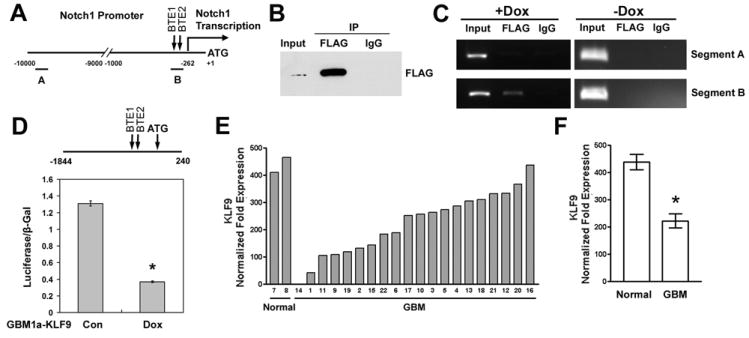Figure 7. KLF9 binds to the Notch1 promoter basic transcriptional element (BTE) sites and inhibits promoter activity.

(A) Schematic of the human Notch1 promotor (-10000 to +1 bp relative to the ATG site; BTE1: GGGGCGGGGC; BTE2: GGGGCGGAGC; Notch1 transcription start site: -262 bp). Segment A and segment B indicate the locations of amplified sequences used for analysis of chromatin immunoprecipitation (ChIP) as described in (C). (B) GBM1a-KLF9 cells were treated with Dox for 72h. Anti-FLAG antibody but not nonimmune IgG specifically precipitated FLAG-tagged KLF9 from the fragmented DNA-protein complexes. (C) GBM1a-KLF9 cells were treated +/- Dox for 72h. DNA fragments were precipitated and analyzed with PCR primer pairs designed to amplify BTE-free and BTE-containing Notch promoter sequences (see A). In Dox-treated but not untreated cells, anti-FLAG antibody co-precipitated BTE-containing (segment B) but not BTE-free (segment A) promoter regions. Control IgG failed to precipitate either fragment. (D) Human Notch1 promoter sequences (-1844 to +240 relative to ATG site, shown on top of the panel) were inserted into the luciferase reporter pGL3-Basic to generate Npro vector. GBM1a-KLF9 cells were treated +/- Dox for 48h and cotransfected with Npro and β-Gal plasmids. 48h after transfection, luciferase activity was measured and normalized to β-Gal activity. KLF9 induction inhibited the luciferase activity driven by the Notch1 promoter. * indicates p<0.01. (E and F) KLF9 expression in 2 normal brains and 20 GBMs was measured by qRT-PCR and normalized to 18S rRNA. KLF9 expression was significantly lower in GBM compared with normal brains (* indicates p=0.0176, t test). Data represents Mean ± SEM.
